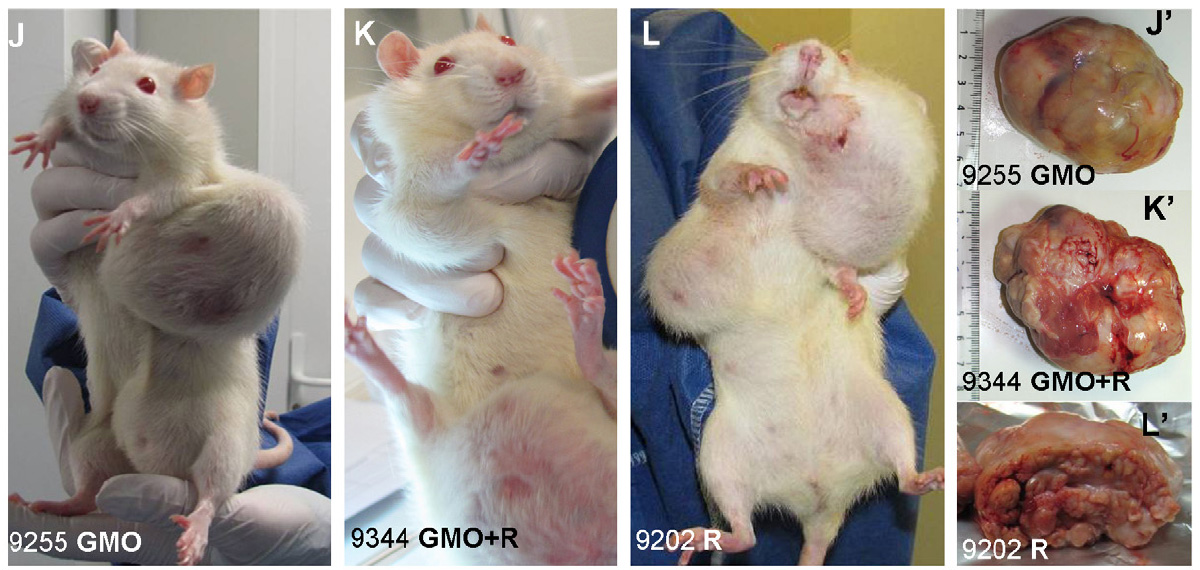So they didn't do any actual research, they just looked at the "Conclusion" part of other research papers and came up with their own conclusion. I would like to review the list of people who funded the research.
Also, why isn't this paper free? The longest ever running GMO research paper is freely available to the public.

Longest-Running GMO Safety Study Finds Tumors in Rats
HERE'S 4.2 MILLION DOLLARS: SHUT IT DOWN!!!!
http://rt.com/news/monsanto-rats-tumor-france-531/
http://www.motherjones.com/tom-philpott/2012/09/gmo-corn-rat-tumor

But the sample size—ten males and ten females per group—is simply too small to draw any conclusions, Hansen says. Moreover, he adds, the researchers used a strain of rat that is known to be highly prone to developing mammary tumors. That factor, plus the small sample size, means that the prevalence of mammary tumors found among the treated female rats could be happenstance, he said.
"I don't want to trash" the study, said one researcher, "but I just don't see enough there that's very persuasive to me at this point."
However, Hansen told me, while all of the individual comparisons—say, kidney dysfunction or mammary tumors between 10 females eating a certain level of GMO feed and 10 females eating non-GMO feed—are "statistically insignificant" because of sample size, taken as a whole, the results paint a troubling picture. Overall, the study made 54 comparisons between treated rats and control rats, and in all but four of them—two involving females, two involving males—the treated rats showed worse outcomes. "That's suggestive that there's something going on and there that should be further research," he said.
I asked Hansen why serious researchers wouldn't have used enough rats in each group to get more robust results. He said that multi-year rat studies, especially ones involving so many different comparison sets, are "extremely expensive," and that the researchers likely did the best they could given their resources.
Another scientist not aligned with industry interests, Ted Schettler, science director of the Science and Environmental Health Network (SEHN), echoed Hansen's concerns about sample size. And he added another: The authors didn't include data about the total food and water intake of the rats in the various groups. The amount of food and water animals consume "can affect both tumor development and kidney function," he said. "And [it] very well may affect mortality."
In a Wednesday conference call with reporters, I raised Schettler's concern with study author Gilles-Eric Séralini, a professor at University of Caen in France. Séralini replied that he and his collaborators couldn't get all the data into their paper because it's "the longest and most detailed [GMO feeding study] that has ever been done so we couldn't put [all the data] in one paper." He said that all the groups had roughly equal feeding and drinking habits, with the exception of the the group that got the highest dose of Roundup, which drank less water than the others. He added that the feeding data, along with comparisons showing more GMO effects, would be published in future papers now in progress.
Schettler added the way the paper presents some of its data is "unusual" and was hard for him to decipher. Overall, he said, he's "intrigued" by the results, but isn't convinced. "I don't want to trash" the study, he said, "but I just don't see enough there that's very persuasive to me at this point." He added: "It does suggest to me that we need longer term feeding studies with GM foodstuff, in a standardized way with the right number of animals in each group so we can pick up the changes and be confident that they exist." He stressed that using enough rats to show robust, statistically significant results would be very expensive.
But that said, I'm all for more long-term studies.




